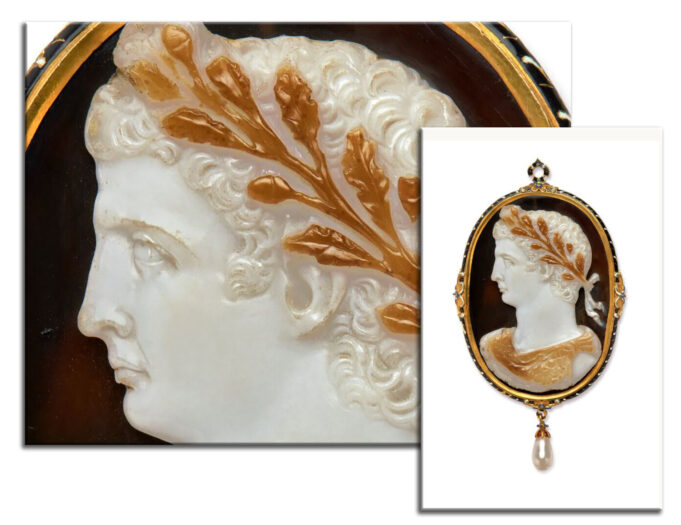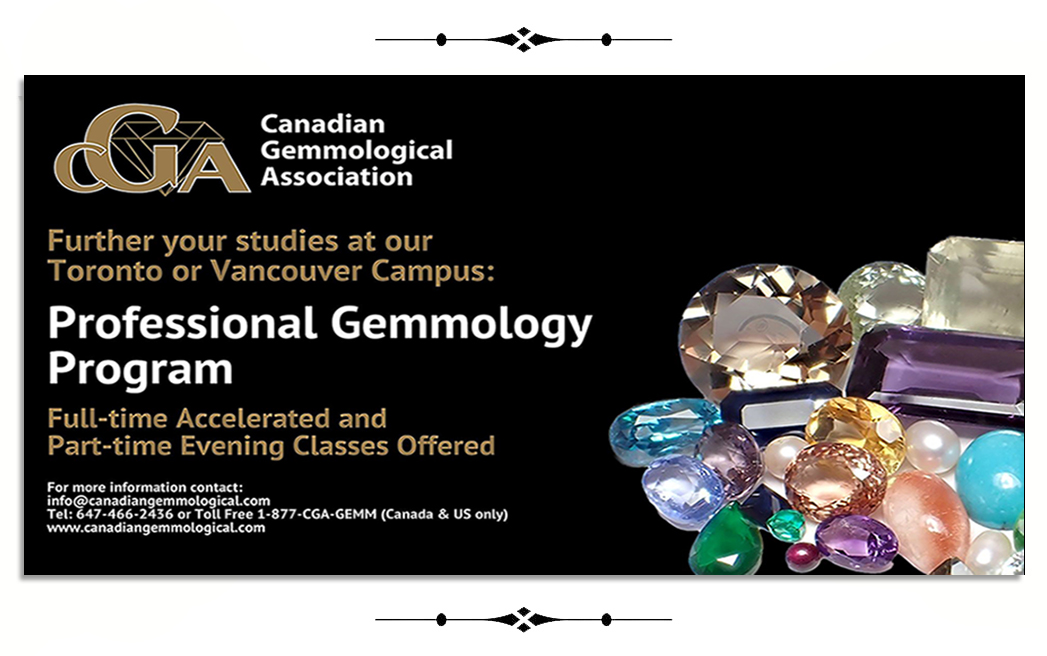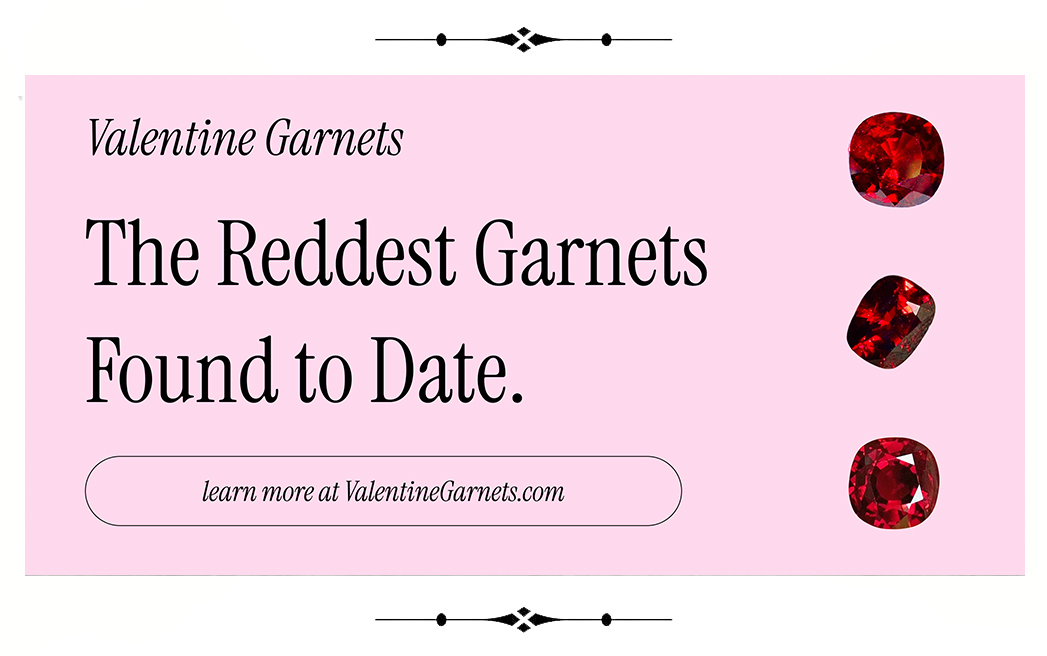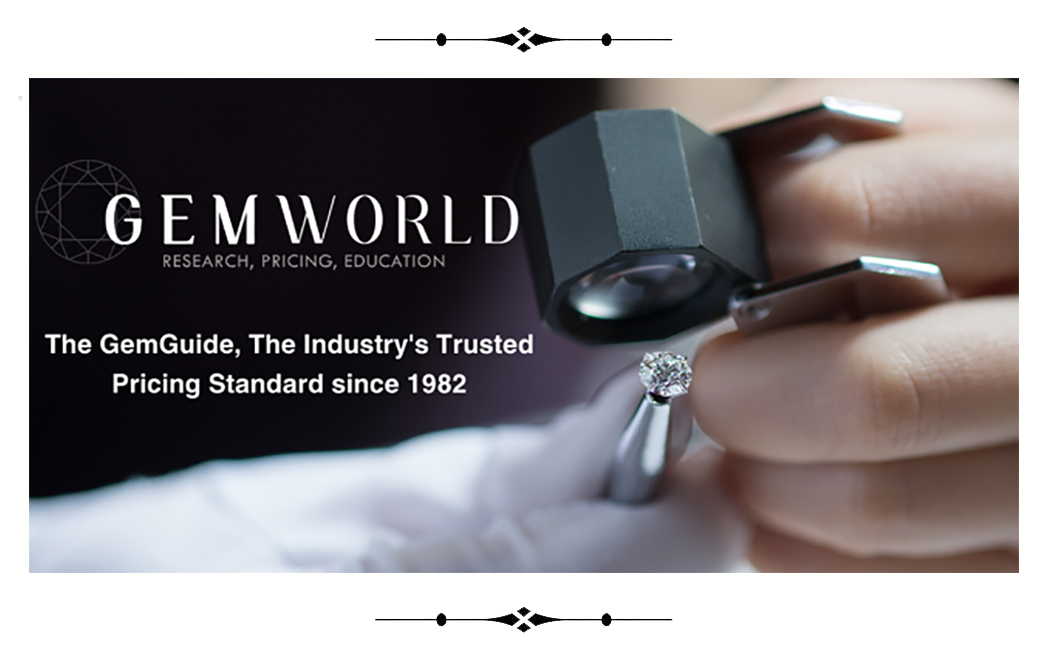Le goût Rothschild: Defining the Dynasty’s Legendary Style – Upcoming Christie’s
Gary Roskin
Roskin Gem News Report
Christie’s
Chritsies.com
Since the 1700s, the family name Rothschild has been synonymous with world-class wealth and taste. The banking family fortune has placed them into an unreachable wealth, some estimate at one Trillion dollars. Hence, to live like the Rothschilds may be impossible, but you may be able to at least own a piece of the family wealth.
“This month, Christie’s is honored to present Rothschild Masterpieces, a series of auctions in New York. With collections dating back to the late 18th century, the Rothschilds are famed for their curated trove of extraordinary works of fine and decorative arts that form the interiors of their homes across Europe.
“This selection of highlights is part of a sale that comes from the collection of Baron James de Rothschild, his wife Betty and their sons Baron Alphonse and Baron Gustave. So lavish were the interiors of their houses in Paris and at the Château de Ferrières that this style became known as ‘goût Rothschild.’ [translated Rothschild Taste, or Rothschild Style]
“The collection to be offered includes important maiolica produced in Renaissance Italy, hardstone boxes, silver and silver-gilt sculptures, European furniture and tapestries, Limoges enamels, Old Master paintings, 17th-century, jewellery and a set of remarkable painted leather panels from Weißenstein castle in Pommersfelden, Germany.” – Christie’s
Much of the collections, including furniture, paintings, and jewels, are, according to collectors, unparalleled. And now, a relatively small portion (some 600 lots!) of their collections will be sold.
Christie’s October 11, 12, and 13 (+ online)
Christie’s notes that this is the first auction of Rothschild objects to take place in North America.
Yes, there will be furniture and old masters’ paintings, but we will focus on the jewels.
A ROMAN SARDONYX CAMEO
PORTRAIT OF THE EMPEROR CLAUDIUS
CIRCA 41-54 A.D.
THE MOUNT ATTRIBUTED TO DANIEL MIGNOT, AUGSBURG, CIRCA 1593-1596
Estimated: USD $200,000 – USD $300,000
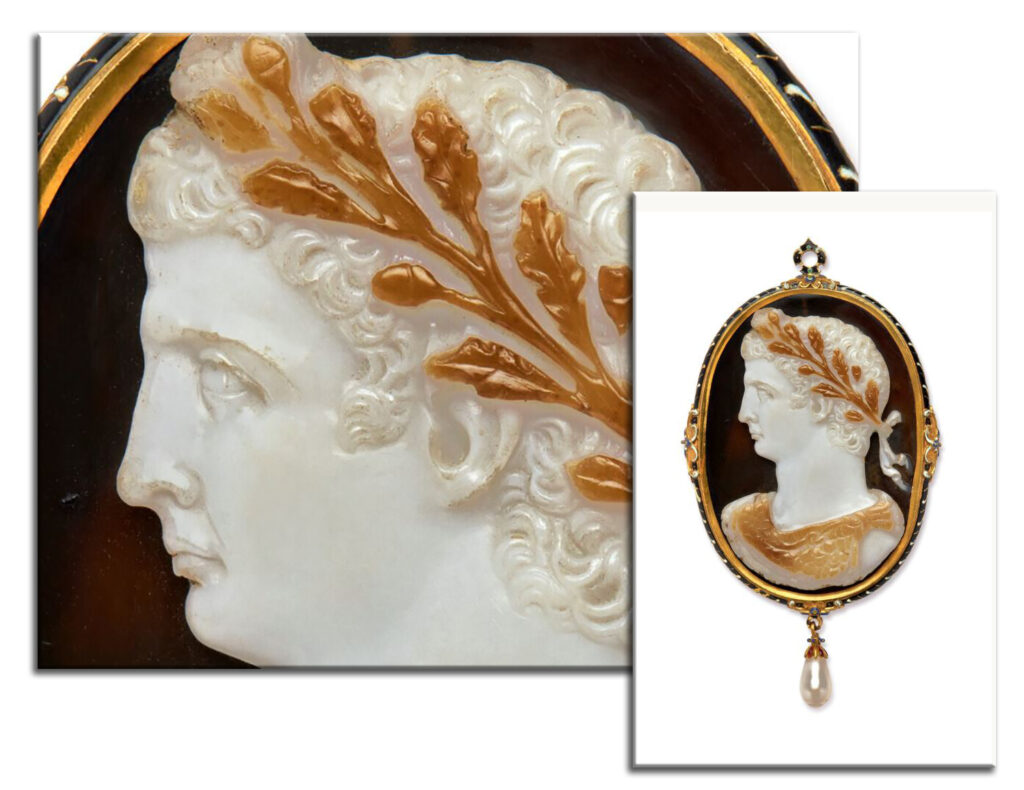
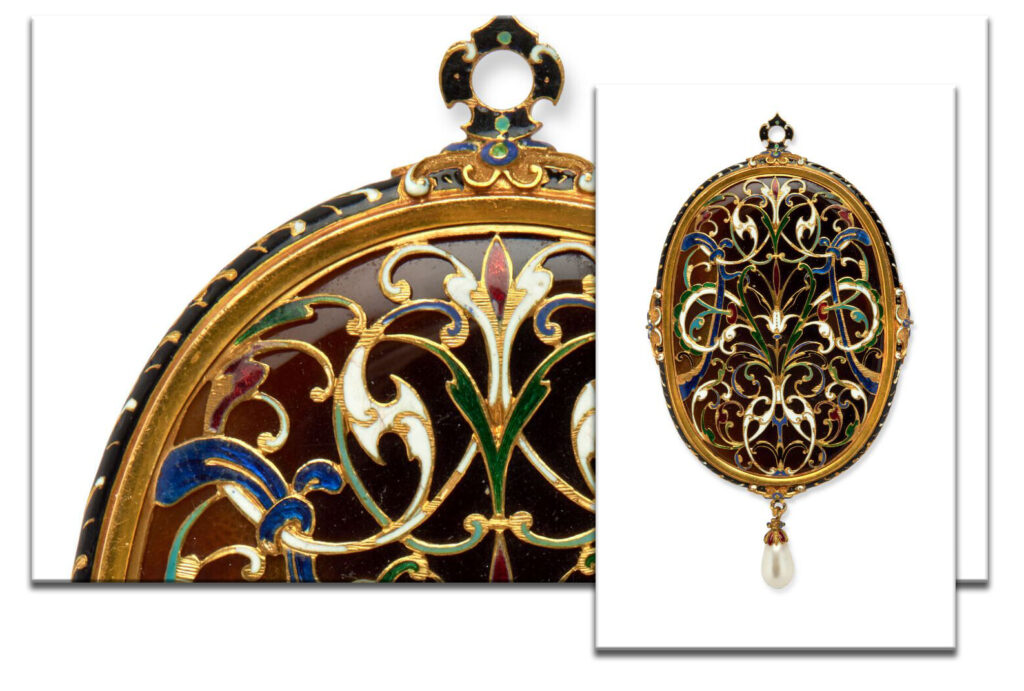
2 7/8 in. (7.2 cm.) long, the cameo
3 5/8 in. (9.2 cm.) long, the mount
Much of the Rothschild collection has an extraordinary amount of history. This cameo is no exception. According to Christie’s, this piece was carved within the first century (CIRCA 41-54 A.D.). The mounting was later added in the 16th century (CIRCA 1593-1596). The pearl drop was added even later.
Christie’s – “This large and finely-carved imperial cameo is sculpted in sardonyx of three layers, orange-brown and white against a darker orange-brown background. The bust of Claudius is depicted with his body in three-quarter view with his head in profile to the left.” Christie’s description goes on to say, “The cameo is mounted in a circa 16th century enameled gold setting with openwork florals and scrolls at the back. From the bottom loop is suspended a drop-shaped pearl with an enameled gold and garnet cap, likely added to the mount in the late 19th or early 20th century.”
“This cameo has a long illustrious ownership history prior to entering the Rothschild Collection. It was first recorded in the collection of Thomas Howard, 2nd Earl of Arundel (1586-1646), one of the first connoisseurs of ancient engraved gemstones in England.”
A RARE ART DECO ROCK CRYSTAL, DIAMOND, MOTHER-OF-PEARL AND BLACK ONYX ‘MODEL A’ MYSTERY CLOCK
SIGNED CARTIER PARIS, 1843, CIRCA 1920
Estimate: USD $250,000 – USD $350,000
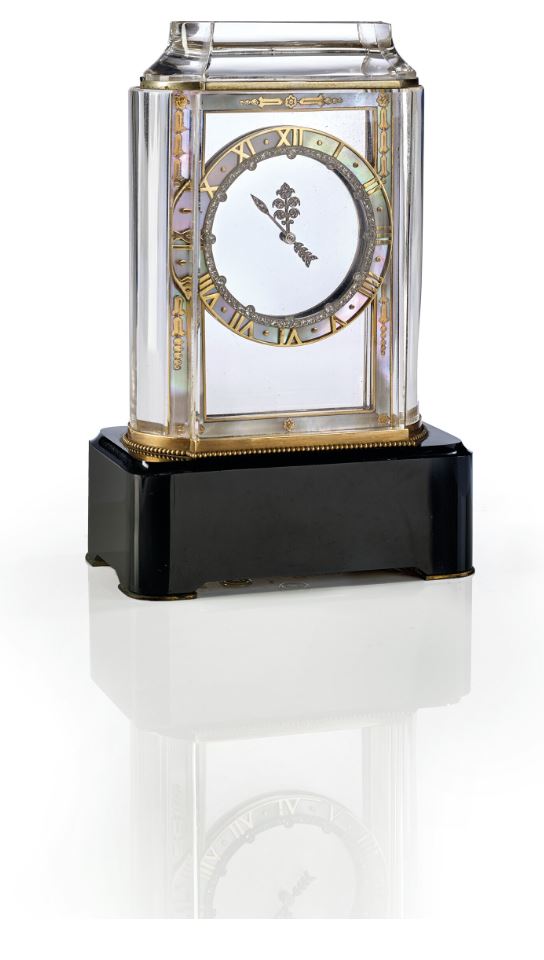
The first mystery clock called ‘Model A’ was introduced by Louis Cartier in 1912 in collaboration with a talented clockmaker Maurice Couët (1885-1963). The clock quickly became popular with Cartier’s customers and secured a special place in the company’s history.
The illusion of hands floating in space, as if unconnected to any mechanical movement, gave the name of ‘mystery clocks’ or ‘pendules mystérieuses‘. In fact, the hands are attached to two glass discs*, each fitted into a metal border edged with gear teeth. The metal borders of the disks are hidden in the minute track, while the movement is housed in the clock case at the base.
A similar mystery clock was sold at Christie’s, New York, 16-26 April 2021, lot 328 ($562,500).
*Glass Discs – In this write-up by Christie’s, the use of the word “crystal” has been translated into “glass.” In the book “Cartier: Jewelers Extraordinary,” 1984, Hans Nadelhoffer, Nadelhoffer refers to the discs as “crystal” and “citrine.” We believe the discs are rock crystal.
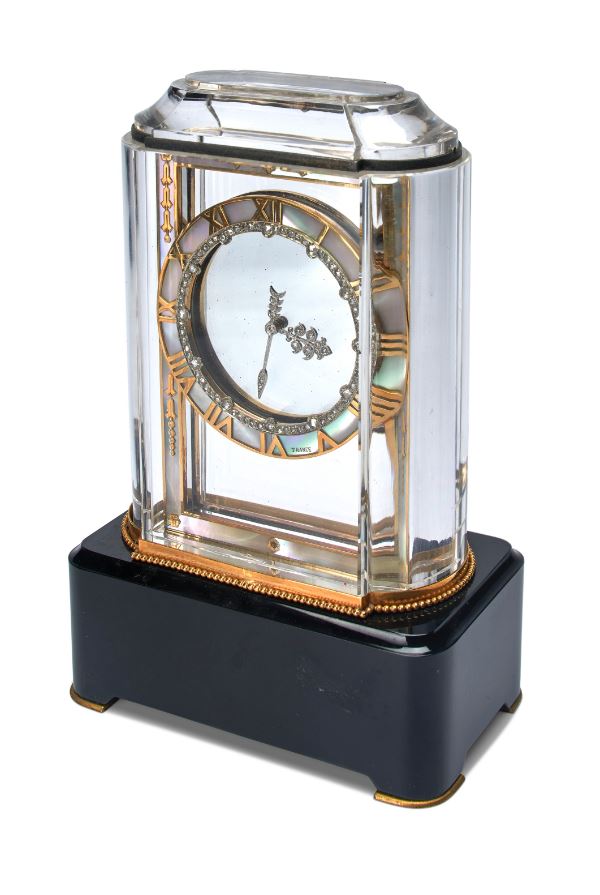
ENAMEL, MOTHER-OF-PEARL, ONYX AND DIAMOND-SET ‘MYSTERY CLOCK’,
PENDULE MYSTERIEUSE ‘MODEL A’
Sold for $562,000
Comparable from April 2021
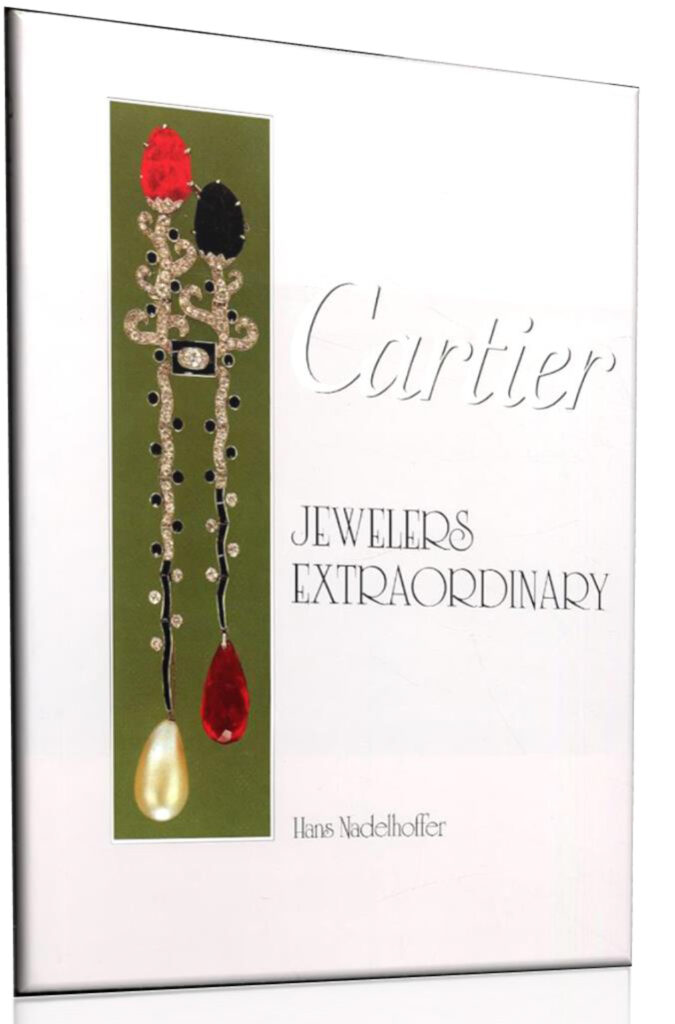
CIRCA: 1928
CASE MATERIAL: Rock Crystal, Gold, Agate, Enamel, Diamonds
CASE SIZE: 93mm x 54mm x 138mm
CASE NOS. : 0760, 0782, 2345
DIAL: Mystery
MOVEMENT: Manual
FUNCTIONS: Mystery, Time Only
BOX: Yes – later fitted box containing a key numbered 2345
PAPERS: Yes – Cartier Certificate of Authentitity dated 23 May 2002
Mystery clocks are described and illustrated in Cartier: Jewelers Extraordinary by Hans Nadelhoffer, pp. 250 – 254 and in The Cartier Collection – Timepieces, Editions Flammarion, pp. 196 – 221.
AN ANTIQUE RUBY, EMERALD, ENAMEL AND DIAMOND TREMBLEUSE BROOCH OF A PERCHED BIRD
CIRCA 1890
Estimate: USD $20,000 – USD $30,000
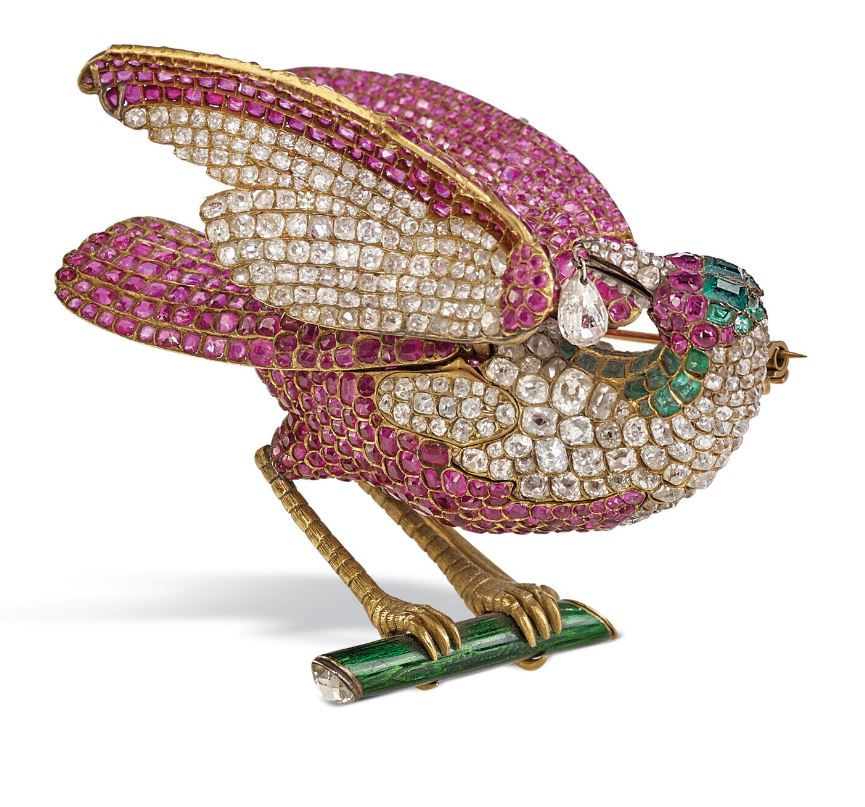
The bird body entirely paved with round, oval and cabochon rubies, rectangular step-cut emeralds, old-cut, and rose-cut diamonds. Set with one briolette in its beak. Green lacquer branch, 18k yellow gold (customs marks) and silver-gilt. (Missing two rubies.)
A FRENCH LAPIS-LAZULI POCKET WATCH
VACHERON CONSTANTIN, PARIS
CIRCA 1950
Lapis-lazuli case, enamel bezel, 18k yellow gold (French assay mark), numbered.
Movement signed Vacheron Constantin.
Estimate: USD $10,000 – USD $15,000
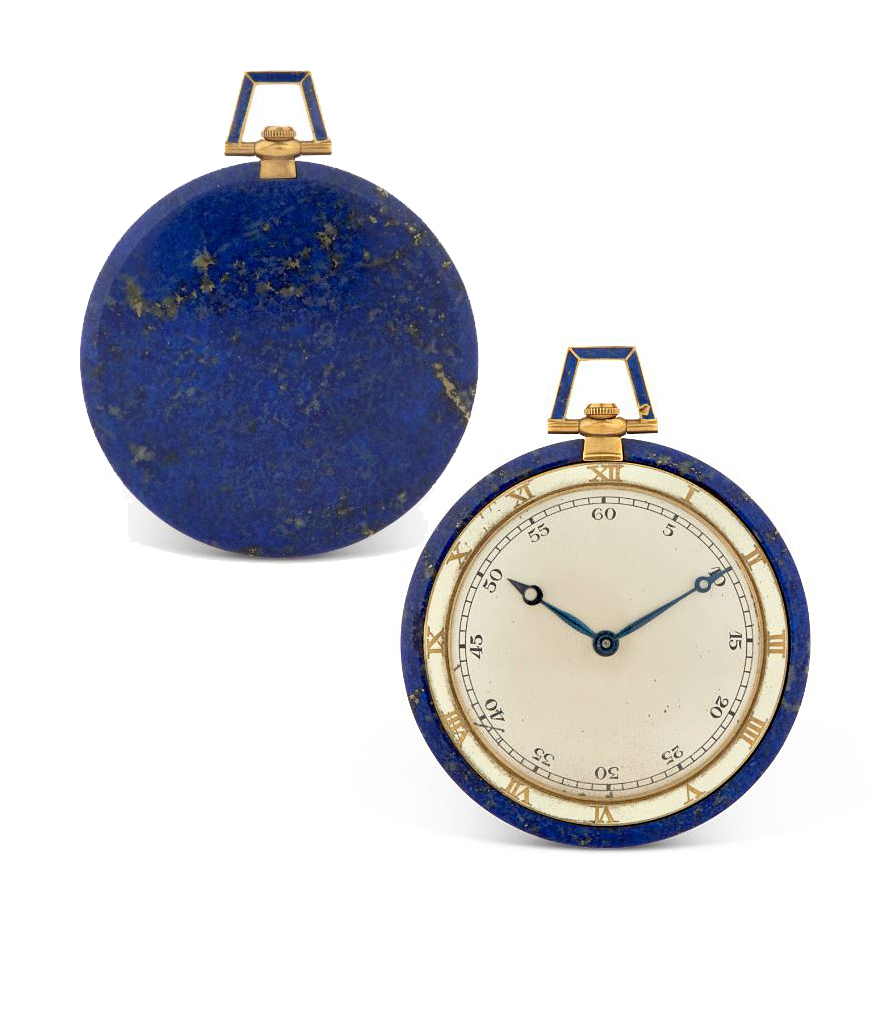
A LOUIS XVI TWO-COLOR GOLD-MOUNTED HARDSTONE SNUFF-BOX
PARIS, 1784, POSSIBLY BY PIERRE DEBREE
Estimate: USD $1,500 – USD $2,000
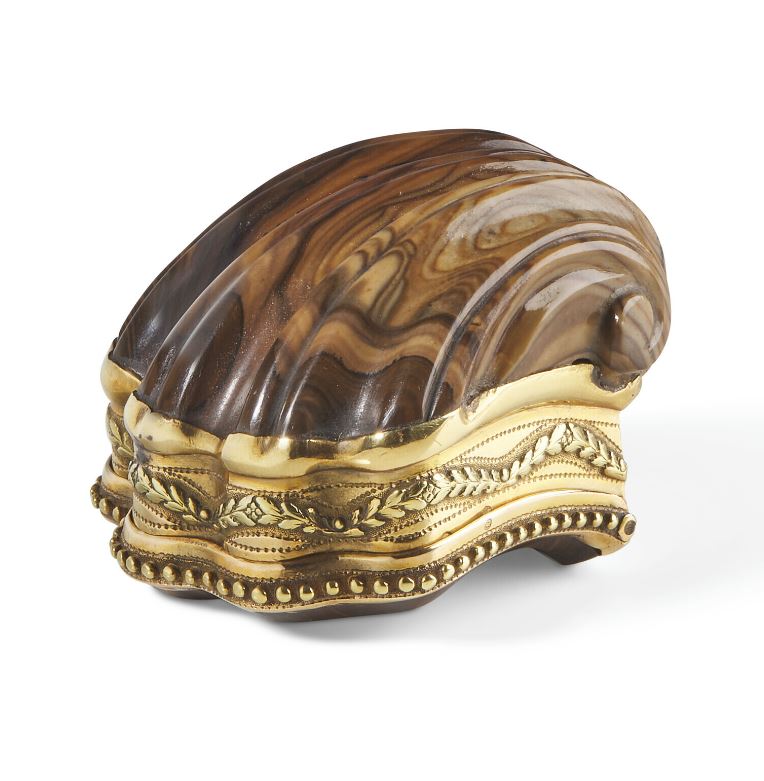
Realistically carved in the shape of a shell from striated brown agate within a gold mount chased with laurel garlands, the corresponding cover mounted à jour within a beaded gold mounts, marked inside rim and outside.
1 ½ in. (4 cm.) long
1 oz. 17 dwt. (57 gr.) gross weight
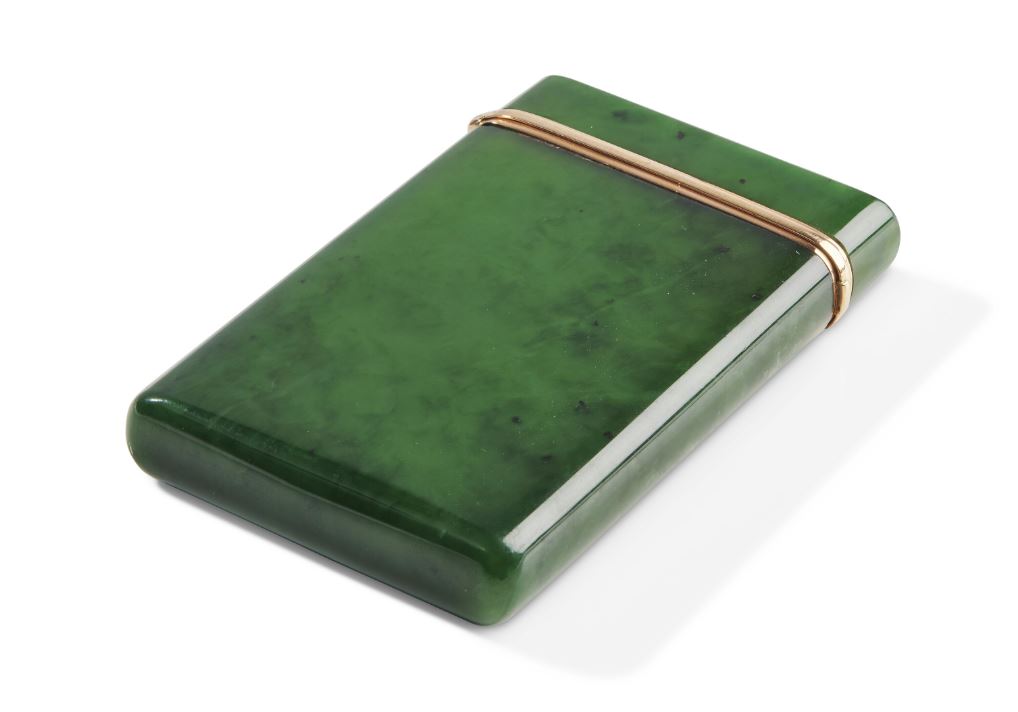
A CONTINENTAL GOLD-MOUNTED NEPHRITE CARD HOLDER
CIRCA 20TH CENTURY
Estimate: USD $500 – USD $800
Rounded rectangular with hinged cover with 14k yellow gold rim, marked 585 K
3 7/8 in. (9.7 cm.) high
AN ANTIQUE RUBY, EMERALD, DIAMOND AND ENAMEL TURBAN ORNAMENT (TURRA) CIRCA 1890
Estimate: USD $8,000 – USD $12,000
Petal-shaped rubies and emeralds, rose-cut diamonds, dark blue, red, yellow, white and green enamel, 18k yellow gold, one diamond deficient to the flower stem
Diamonds: center diamond weighing approximately 3.75 – 4.00 carats
[PLEASE NOTE: Look what we noticed! The top center diamond is not a rose cut to match the others, but is (most likely) an Old European Cut, set culet up. – gr]
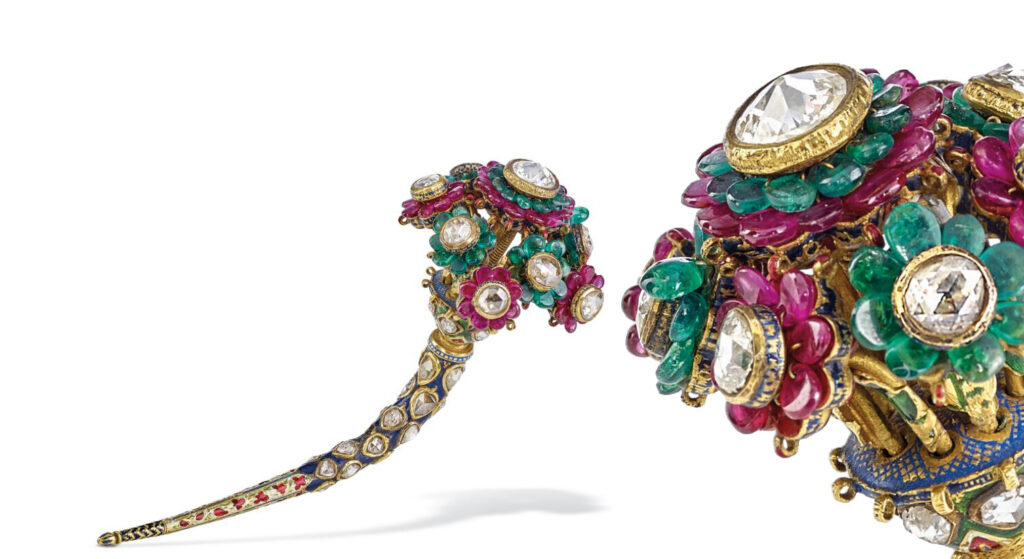
Size/Dimensions: 14 cm (5 ½ in)
Gross Weight: 103.0 grams
There are Renaissance jewels, rock crystal household items, and a set of 5 silver matchboxes, just to mention a few items in the three-day sale.
Tap here to look over the week-long auction lots from the Rothschild collection.



